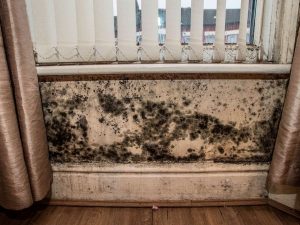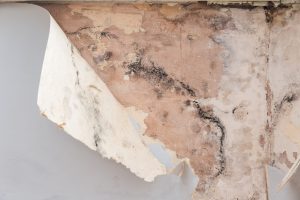Uncovering the Hidden Dangers of Housing Disrepair: Your Essential Guide to a Safe and Healthy Home
Uncovering the Hidden Dangers of Housing Disrepair: Your Essential Guide to a Safe and Healthy Home.
Are you aware of the hidden dangers lurking in your own home? From mould growth to structural issues, housing disrepair can pose severe risks to your health and safety. This essential guide will uncover these dangers and provide you with the knowledge you need to transform your home into a safe and healthy haven. One of the primary concerns of housing disrepair is mould. Mould can thrive in damp and poorly ventilated areas, leading to respiratory problems, allergies, and even more severe health issues. Additionally, structural issues such as faulty wiring or unstable foundations can pose significant hazards to your household.
By understanding these hidden dangers, you can proactively identify and address any housing disrepair issues in your home. Whether fixing leaky pipes, improving ventilation, or conducting regular inspections, your safety and well-being should always be a top priority. Don't let housing disrepair jeopardise your health and the well-being of your loved ones. Stay informed, take action, and create a safe and healthy living environment. Let's dive into the essential guide to uncovering the hidden dangers of housing disrepair.
Common Types of Housing Disrepair
Housing disrepair can manifest in various ways, and it's crucial to be aware of the most common types to ensure your home remains safe. One prevalent issue is dampness, leading to mould growth and health problems. Leaky pipes, damaged roof tiles, or poor ventilation can all contribute to dampness, making it essential to address these issues promptly.
Another common type of housing disrepair is faulty wiring. Outdated or incorrectly installed electrical systems can pose a significant risk of electric shocks or fires. Ensuring your home's wiring is up to date, regularly inspected, and meets safety standards is crucial.
Structural issues such as unstable foundations or damaged walls can also be hazardous. These problems can compromise the stability of your home and pose a risk of collapse or injury. Regular inspections and prompt repairs are crucial to addressing any structural disrepair.
The Dangers of Housing Disrepair on Health
If left unaddressed, housing disrepair can substantially impact your health. One of the primary concerns is the presence of mould. Mould thrives in damp and poorly ventilated areas, releasing spores that can cause respiratory problems, allergies, and even more severe health issues. Prolonged mould exposure can lead to asthma, bronchitis, and other respiratory conditions.
Additionally, housing disrepair can contribute to poor indoor air quality. Faulty ventilation systems or inadequate air circulation can trap pollutants and allergens, exacerbating respiratory conditions and causing other health issues. These pollutants can include dust mites, pet dander, and chemical fumes, adversely affecting your respiratory system and overall well-being.
Furthermore, structural issues such as cracked walls or unstable flooring can result in accidents and injuries. Falls, trips, and collapses can occur if these problems are not addressed promptly. Maintaining a safe and hazard-free environment to protect yourself and your loved ones is crucial.
Legal Rights and Responsibilities in HDR Cases
If you find yourself experiencing housing disrepair, it's essential to understand your legal rights and responsibilities. In many jurisdictions, landlords have a legal duty to ensure that the properties they rent are safe and habitable. This duty includes addressing any necessary repairs promptly and maintaining the property in good condition.
As a tenant, you also have responsibilities, such as promptly reporting any disrepair issues to your landlord. It's crucial to keep records of all communication and document the property's condition before and after reporting any problems. This documentation can be valuable evidence if legal action becomes necessary.
If your landlord fails to address the housing disrepair issues within a reasonable timeframe, you may be entitled to seek legal remedies. These remedies can include compensation for any damages or harm caused by the disrepair, rent reductions, or even termination of the tenancy.
Steps to Take If You're Experiencing Housing Disrepair
If you discover housing disrepair in your home, there are several steps you can take to address the problem. The first and most crucial step is to report the issue to your landlord or property management company. Ensure that you provide a detailed description of the problem, including any visible damage or health hazards.
Communicating with your landlord in writing is essential, as this creates a paper trail and ensures a clear record of your complaints. Keep copies of all correspondence and consider sending the letters via certified mail to have proof of delivery.
In some cases, your landlord may respond promptly and arrange for repairs. However, you may need further action if they fail to address the disrepair or ignore your complaint. This could involve seeking legal advice or contacting your local authority to report the issue.
How to Report to Your Landlord or Local Authority
Reporting housing disrepair to your landlord or local authority ensures your safety and well-being. Start by submitting a written complaint to your landlord, detailing the specific issues and requesting repairs. Keep a copy of the letter for your records and send it via certified mail to ensure proof of delivery.
If your landlord fails to respond or address the disrepair, it's important to know that there are further avenues to explore. In such cases, you may need to escalate the matter to your local authority. Reach out to your local housing department or environmental health department and provide a detailed account of the situation. They will then guide you on the next steps, which may include conducting an inspection of the property to assess the severity of the disrepair.
When the inspection takes place, it's of utmost importance to present any evidence you have at hand. This could include photographs, correspondence with your landlord, or records of any health issues caused by the disrepair. The local authority will then take appropriate action, which may involve issuing an improvement notice to your landlord or initiating legal proceedings if necessary.
Conclusion and Final Thoughts
Don't let housing disrepair jeopardise your health and the well-being of your loved ones. Understanding the hidden dangers and taking proactive steps can transform your home into a safe and healthy haven. Regular inspections, prompt reporting of issues, and necessary repairs are crucial to maintaining a hazard-free environment.
If you are experiencing housing disrepair, familiarise yourself with your legal rights and responsibilities. Report the issues to your landlord or local authority, and seek legal advice if necessary. Remember, you may be entitled to compensation if you have suffered harm or incurred expenses due to the disrepair.
Maintaining a safe home is a collective effort between tenants and landlords. You can create a living environment that prioritises your safety and well-being by staying informed and taking action. Don't underestimate the importance of a safe and healthy home—the foundation for a happy and fulfilling life.

